To truly understand the heart of a country, you have to taste its most unique flavors. While the Philippines is famous for beloved dishes like Adobo and Lechon, there’s a whole other side to its culinary landscape. This other side is more daring, more unusual, and for the adventurous eater, infinitely more exciting. This is the world of exotic food in the Philippines.
From street-side skewers that test your courage to tropical fruits with otherworldly shapes and flavors, this guide is your passport to the most unforgettable culinary experiences the islands have to offer. We’ll explore the most talked-about exotic dishes in the philippines before diving into a paradise of exotic fruits that you simply can’t find back home.
Are you ready for a real taste of the Philippines? Let’s begin!
You might also like: The Top 7 Must Haves Every Traveler Needs
Part 1: The Culinary Dare – Exotic Dishes & Street Food
This is where your foodie adventure truly gets a dose of adrenaline. These are some of the most famous exotic foods in the philippines that locals enjoy and travelers talk about for years to come.
1. Balut (Fertilized Duck Embryo)

- What it is: The undisputed king of exotic food in the philippines, Balut is a developing duck embryo that is boiled and eaten in its shell. Typically incubated for 14 to 21 days, the contents consist of a broth, a yolk, and the embryo itself.
- The Experience & Taste: You crack the shell, sip the warm, savory broth, and then season the yolk and embryo with salt and vinegar before eating. The yolk is rich and creamy, while the embryo has a texture that can vary depending on its age. It’s a rite of passage for any culinary adventurer in the country.
- Where to Find It: Commonly sold by street vendors in the evenings.
2. Isaw & Adidas (Grilled Intestines & Chicken Feet)
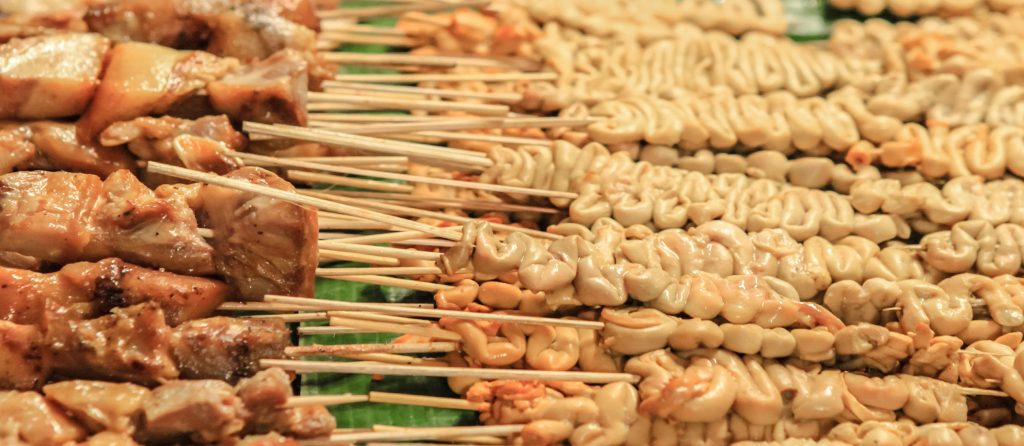
- What is it? The Philippines has a rich culture of barbecue street food, and Isaw (well-cleaned and coiled chicken or pork intestines) is a star player. Adidas is the fun local term for marinated and grilled chicken feet.
- The Experience & Taste: Both are skewered and grilled over hot coals, then basted with a sweet and savory sauce. The Isaw has a unique, slightly chewy texture and a smoky flavor, while the Adidas is gelatinous and savory. Don’t forget to dip it in spicy vinegar!
- Where to Find It: Street food stalls, especially near universities and public markets.
3. Dinuguan (Pork Blood Stew)
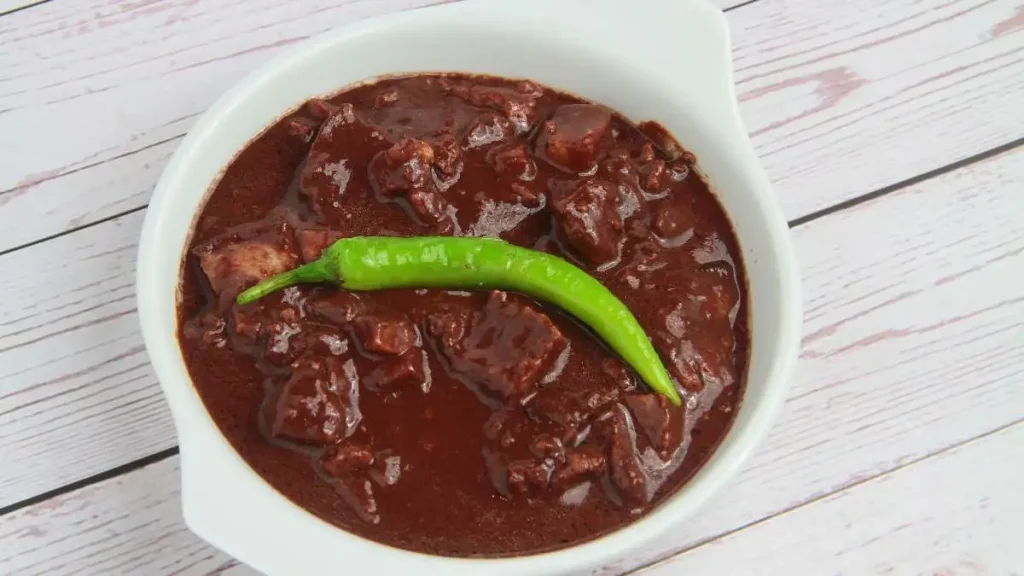
- What is it? A rich, savory stew made from pork offal, like lungs, intestines, and heart. It is simmered in a thick, dark gravy of pig’s blood, garlic, chili, and vinegar.
- The Experience & Taste: Despite its main ingredient, Dinuguan does not taste metallic. It’s deeply savory, slightly sour, and often has a hint of spice. It is comfort food for many Filipinos and is almost always eaten with Puto (steamed rice cakes) or white rice.
- Where to Find It: Widely available in local eateries (carinderias) and even some restaurants.
4. Tamilok (Woodworm)
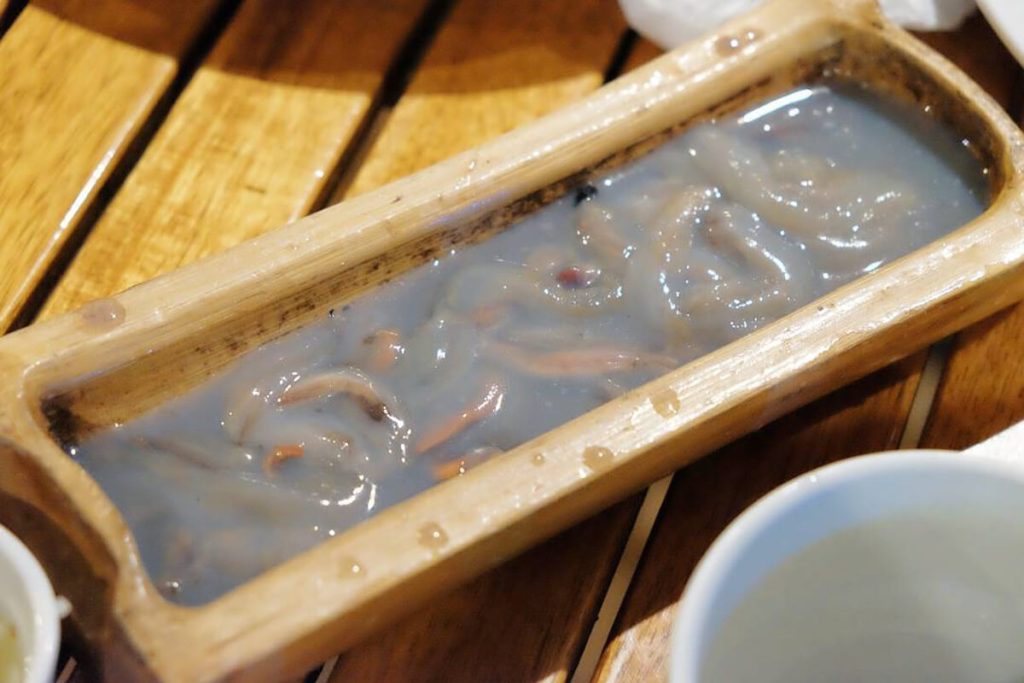
- What is it? Found in the mangroves of Palawan and other regions, Tamilok is not actually a worm but a type of saltwater clam with a long, soft, grayish body. They are harvested from rotting wood submerged in seawater.
- The Experience & Taste: Tamilok is eaten raw, typically prepared like Kinilaw (Filipino ceviche) by marinating it in vinegar, chili, and onions. It has a texture very similar to an oyster: soft, slimy, and briny.
- Where to Find It: Primarily in Palawan, especially in restaurants in Puerto Princesa and Sabang.
5. Tuslob-Buwa (Cebu’s “Dip in Bubbles”)
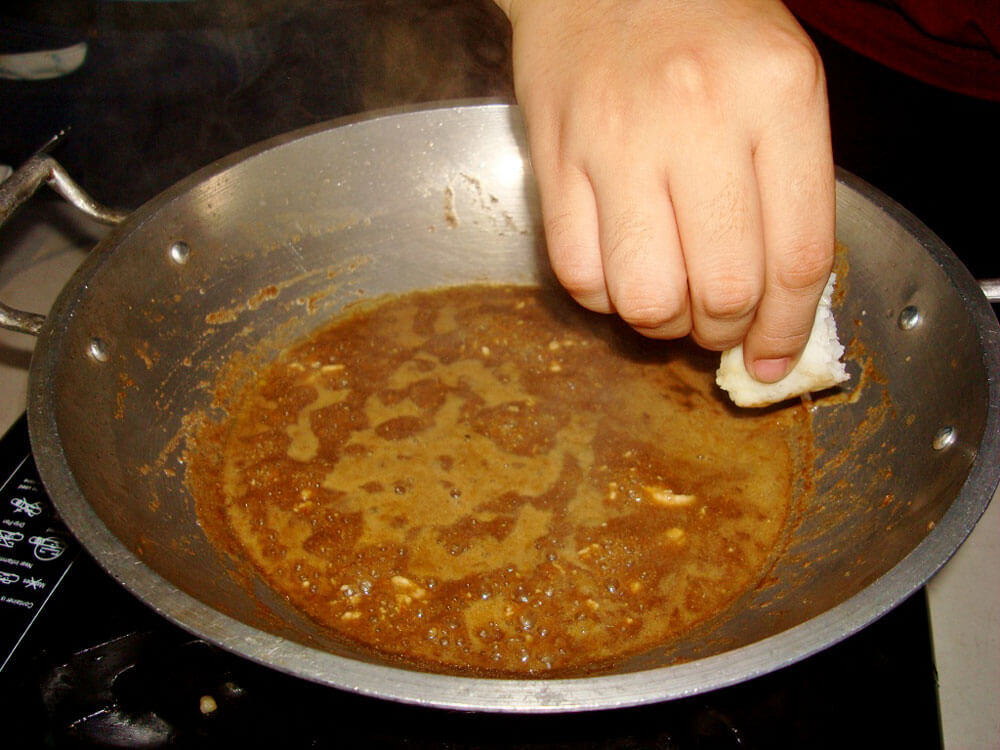
- What is it? A truly unique Cebuano street food experience. Tuslob-Buwa involves a communal pot where a mixture of pork brain, liver, and other seasonings are sautéed until they create a thick, bubbling gravy.
- The Experience & Taste: The name literally means “dip in bubbles.” You take puso (hanging rice) and dip it directly into the communal bubbling pot. The taste is incredibly rich, savory, and umami-packed. It’s less about the dish itself and more about the communal, interactive experience.
- Where to Find It: Specific street food stalls in Cebu, particularly in areas like Pasil or Suba. Some modern food parks now offer it in a more controlled setting.
6. Kamaru (Mole Crickets)
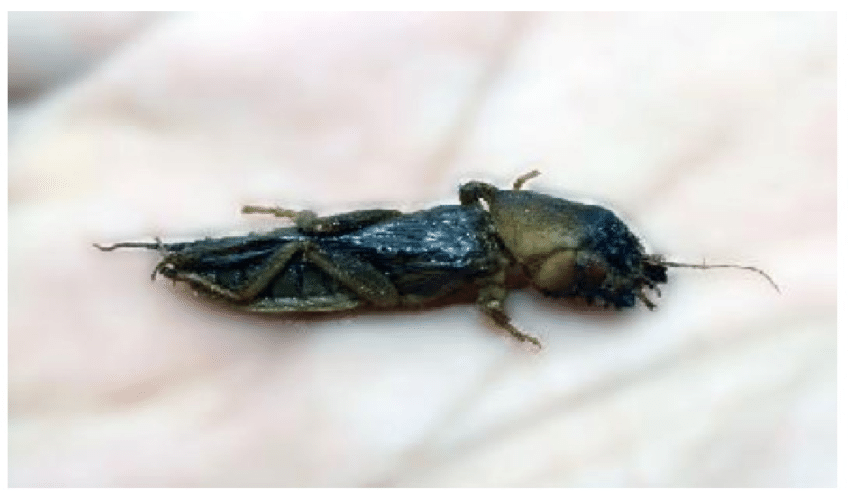
- What is it? A famous exotic food philippines delicacy, especially in the culinary capital of Pampanga. Kamaru are mole crickets, often harvested from rice fields.
- The Experience & Taste: They are usually prepared as Adobong Kamaru, sautéed in soy sauce, vinegar, garlic, and tomatoes. When cooked, they become surprisingly crispy on the outside and moist on the inside. Many say they have a unique, slightly earthy taste.
- Where to Find It: Restaurants specializing in Kapampangan cuisine.
Part 2: A Taste of Paradise – Exotic Fruits in the Philippines
Beyond the world-famous mangoes and bananas, the Philippines is a treasure trove of unique, delicious, and sometimes bizarre-looking tropical fruits. Exploring a local market is a must for any visitor.
7. Durian: The Infamous “King of Fruits”

- What is it? A large, spiky fruit famous for its overwhelmingly strong aroma, which is banned in some hotels and on public transport. Inside, it has creamy, custard-like pods of flesh.
- The Flavor Profile: The smell is pungent, but the taste is surprisingly complex. It is rich, sweet, and creamy, with hints of almond, caramel, and vanilla. You either love it or hate it!
- Where to Find It: Abundant in Mindanao, especially Davao, which is considered the Durian Capital of the Philippines. Available seasonally elsewhere.
8. Mangosteen: The Divine “Queen of Fruits”
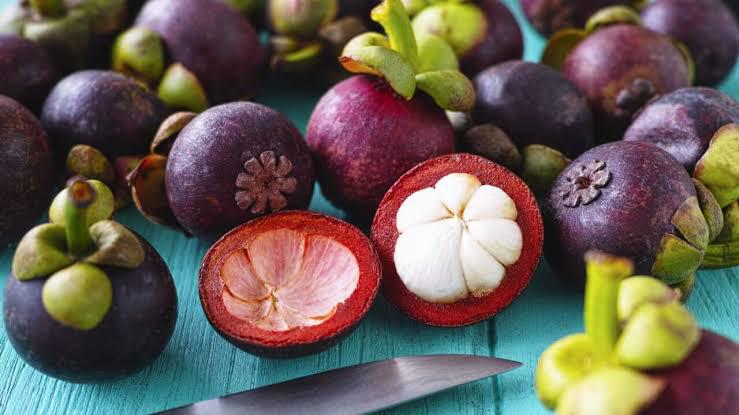
- What is it? A small, round fruit with a thick, purple rind. When you open it, you’ll find soft, snow-white segments of fruit inside.
- The Flavor Profile: The taste is sublime, offering a perfect balance of sweet and tangy with notes of lychee, peach, and vanilla. It’s incredibly juicy and refreshing.
- Where to Find It: Also common in Mindanao, but available in many markets across the country when in season.
9. Rambutan: The Hairy Eyeball
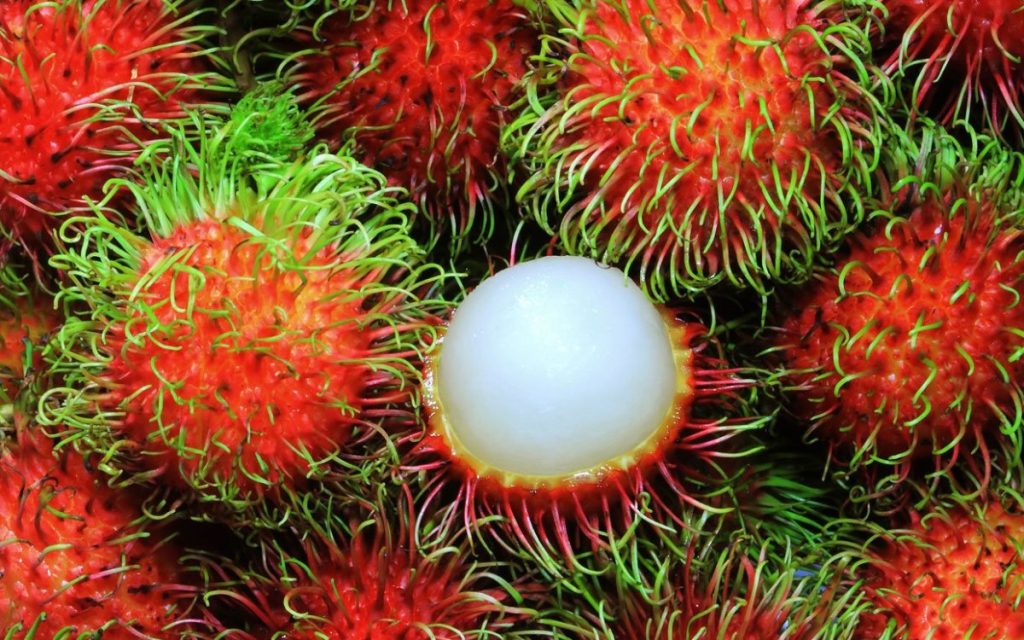
- What is it? This fruit gets its name from the Malay word for “hair.” It’s a golf-ball-sized fruit covered in soft, spiny tendrils. Peel back the red or yellow skin to reveal a sweet, translucent white flesh surrounding a seed.
- The Flavor Profile: Sweet, juicy, and very similar to a lychee or grape. It’s a fun and delicious fruit to eat.
- Where to Find It: Widely available in fruit stalls and markets nationwide during its season (typically August-October).
10. Lanzones

- What is it? Small, round fruits that grow in large bunches. They have a thin, yellowish-brown skin that peels away easily to reveal translucent, grape-like segments.
- The Flavor Profile: Can range from sweet to slightly tart, with a delicate and refreshing taste. Be careful not to bite the bitter seed inside! Camiguin Island is famous for its exceptionally sweet Lanzones and holds an annual festival in its honor.
- Where to Find It: Seasonal, but widely available in markets. Look for the “Camiguin” variety for the sweetest ones.
11. Marang
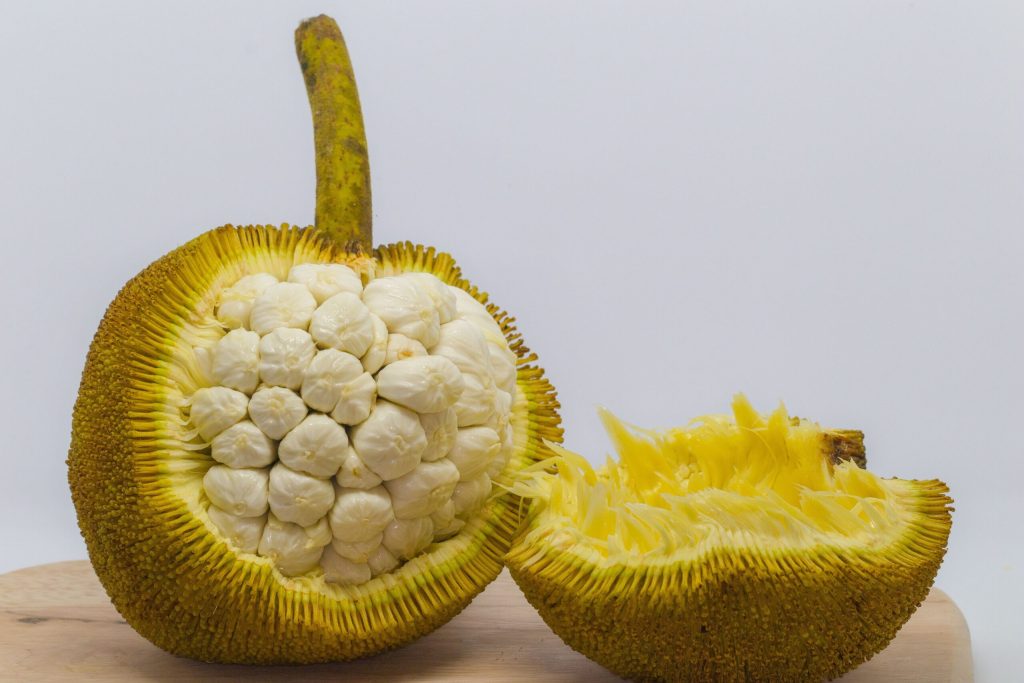
- What is it? A relative of jackfruit and durian, the Marang is a large, spiky fruit with a less pungent smell than durian. The peel is covered in soft spikes, and inside are white, juicy pulp segments.
- The Flavor Profile: The aroma is pleasant and sweet, and the taste is creamy and delicate, like a mix of banana, pear, and jackfruit. The texture is softer and juicier than jackfruit.
- Where to Find It: Primarily found in the southern islands, especially Mindanao.
12. Santol (Cotton Fruit)

- What is it? A round fruit with a fuzzy, golden-brown skin. The edible part is the white, cottony pulp surrounding the large seeds inside.
- The Flavor Profile: The pulp can be sweet or sour. The sour variety is often used in cooking, particularly in the dish Sinigang na Santol. The sweet variety is eaten fresh, often with a sprinkle of salt.
- Where to Find It: Common in backyards and local markets during its season.
13. Chico (Sapodilla)
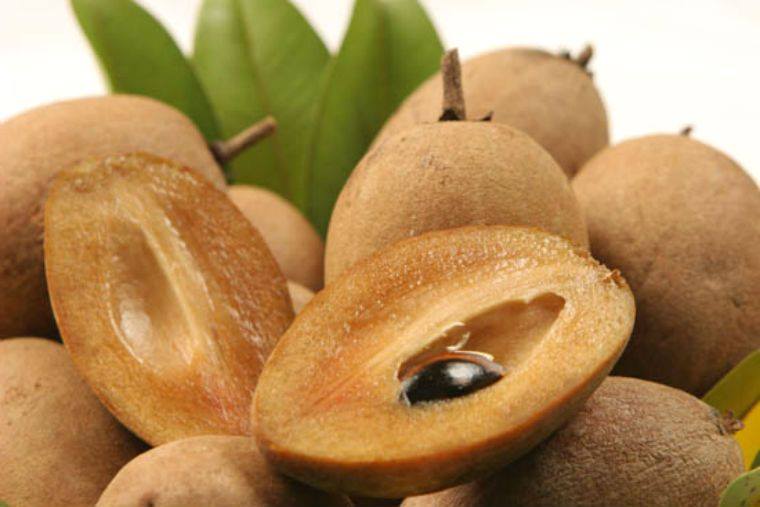
- What is it? A small, round fruit with a rough, brown, kiwi-like skin. The flesh inside is yellowish-brown to reddish-brown, soft, and slightly gritty, like a pear.
- The Flavor Profile: Exceptionally sweet with a unique malty or brown sugar-like flavor. It’s a delicious dessert fruit.
- Where to Find It: Common in markets when in season.
A Note on Respectful Eating
Remember, what is “exotic” to a visitor is often a cherished tradition or a source of comfort for locals. Approach each new dish and fruit with an open mind, a respectful attitude, and a curious palate. You’ll be rewarded with a much richer travel experience!
Which of these exotic foods have you tried, or which one would you dare to taste? Let me know your adventurous picks in the comments below!
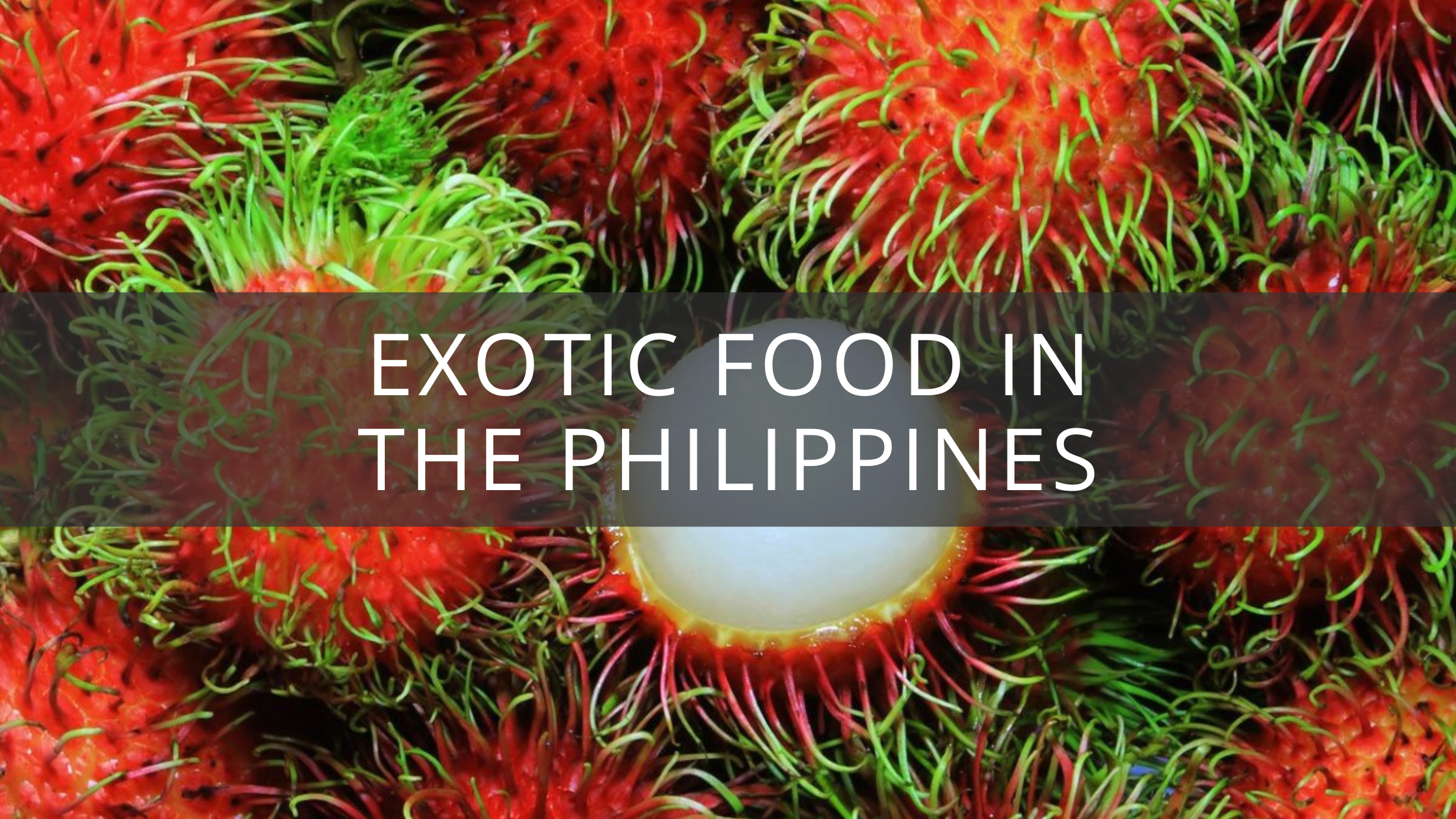

Leave a Reply